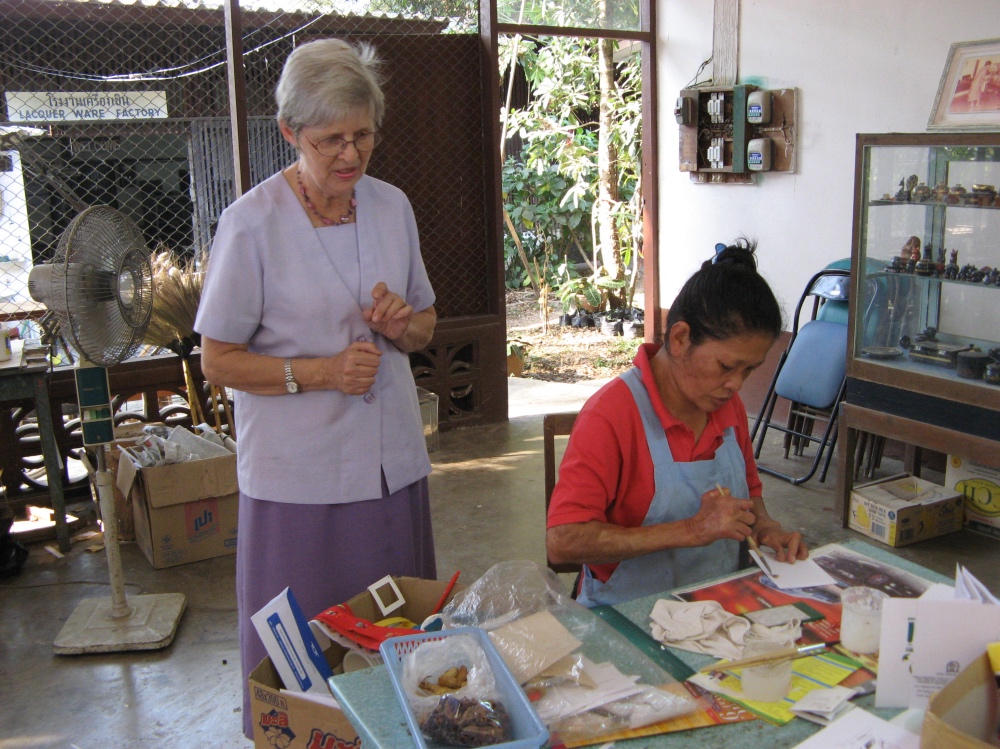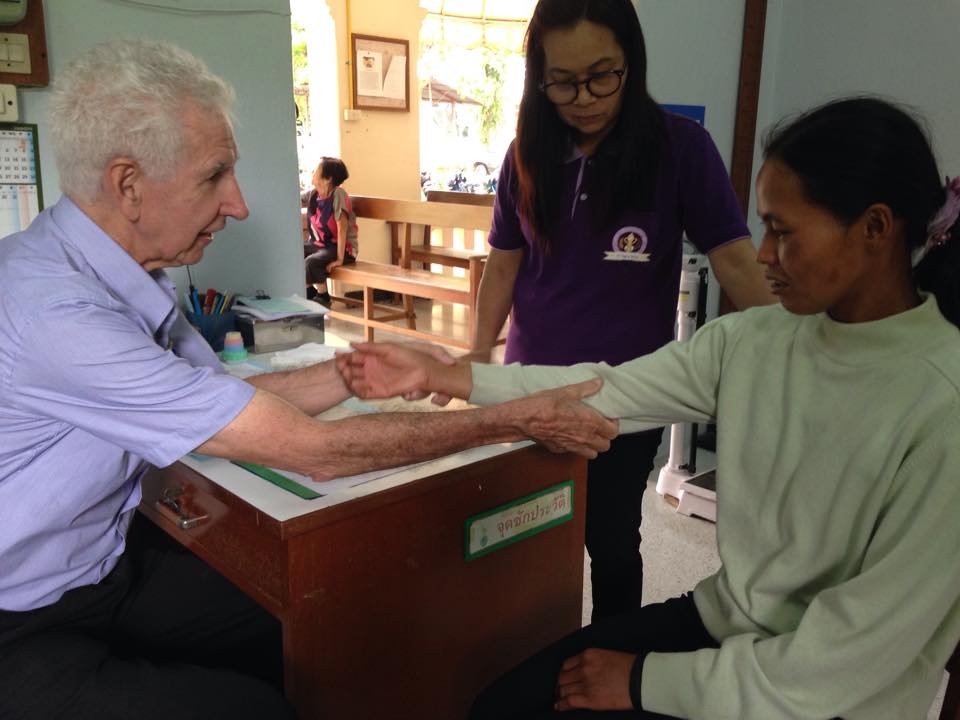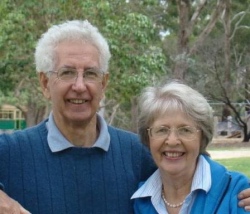
Australians Heather and Trevor Smith have just clocked up 50 years with serving with The Leprosy Mission in Thailand. DAVID ADAMS chats with them about some highs and some challenges during their five decade long journey…
Australians Heather and Trevor Smith – whom Sight first encountered back in 2004 – have just clocked up 50 years with serving with The Leprosy Mission in Chiang Mai, Thailand. They spoke in an interview with Sight about some highs and some challenges during their five decade long journey…
Firstly, congratulations on 50 years with the mission. When you started out 50 years ago, did you ever imagine your service would reach such a milestone?
“No, we were not thinking about time, beyond the sense that we should be involved in medical mission work in Asia, and God seemed to be leading us at that time to go to Thailand. The national Thai church leaders had asked The Leprosy Mission to send in a team to bring modern treatment to a big leprosy centre which lacked professional staff.”

Heather Smith at the McKean Rehabilitation Centre in Chiang Mai, Thailand. PICTURE: Supplied.
Tell us a little about The Leprosy Mission – what’s its role and where does it operate?
“The Leprosy Mission works in many different countries alongside a variety of national partners from varied backgrounds to defeat leprosy and bring new life in all its fullness to people affected by leprosy and disability, to their families and communities. So that involves the mission in professional medical and social and development work, close interaction with patients who may be stigmatised and marginalised from society and families, all of who may be suffering the social and economic consequences of misunderstanding and fear about this disease.”
WHAT IS LEPROSY?
Leprosy, which is also known as ‘Hansen’s Disease’ after the scientist who discovered the cause, is caused by bacteria – either Mycobacterium leprae or Mycobacterium lepromatosis – and can attack and destroy the nerves in the body, especially in the hands, feet and face, resulting in loss of feeling and/or function. If not correctly diagnosed or medical attention is not sought or provided, the nerve damage can result in problems that can be permanent – ulcers on the hands or feet that won’t heal, deformities of hands with clawed fingers and abnormal function of the feet so they can no longer walk normally because of a drop foot or similar condition. Leprosy may be initially seen as discoloured skin patches or as raised nodules but it can often take one to 20 years of incubation before any visible or physical effects are noticed. Sometimes the cartilage which shapes and supports the nose can be destroyed and the nose can collapse. Research suggests the bacteria is spread through prolonged, regular exposure to a person carrying the disease. It is thought to be most likely transmitted through water borne droplets (coughing and sneezing). One person is diagnosed with leprosy every two minutes. Leprosy is found all over the world – sometimes even in Australia. It is most common in places of poverty. India accounts for 60 per cent of new cases each year.
Source: The Leprosy Mission
How did you come to be called to serve with the Leprosy Mission in Thailand?
“We were fortunate to be involved with The Leprosy Mission through a period of incredible change and development in the treatment of leprosy, and the approach to leprosy worldwide. When we first went to Thailand leprosy patients were generally rejected from home and society, so we had many hundreds of patients of all ages living in McKean, the 150 acre leprosy centre founded by a missionary 60 years earlier. The patients had not been diagnosed or treated early, and many had severe disabilities and bad sores. from damaging anesthetic feet and hands. They all. anticipated living in a leprosy colony for life. There was a school for the children, and workshops and five village groupings of cottages for single patients. sometimes patients met and wanted to marry, so McKean also had 20 other leprosy villages around the countryside where they could go to start new life together as a family with help to build a home and try to start a livelihood.
“But in 1970 we heard that WHO suggested the future policy should not be segregation of leprosy patients, but integration and rehabilitation. So we spent a challenging 15 years trying to implement that policy, and enable 900 patients to be empowered to return to a home and society that would accept them. This involved out team not just in medical work, reconstructive surgery and rehabilitation, but also in social work and health education in community, and vocational training, and counselling, and networking and problem solving. We still had 120 patients who were too elderly and disabled to be able to start again supporting themselves in community, and we recognised they would continue to be our responsibility for life.
“The Leprosy Mission has continued to support the leprosy work of the centre, and the charity work amongst marginalised disabled people needing access to treatment and rehabilitation. Now McKean is a registered senior care centre, still run by the national Thai church foundation.”
How have your roles changed?
“At various times over the past 50 years we have reconsidered our own involvement, but have been invited by the Thai leadership to remain and take various roles, and we have felt it was right for us to do so. Trevor was able to move out of medical leadership and concentrate on medical practice, Heather has taken a variety of roles in the educational welfare, vocational training and administration and leading the development of the multi-tiered aged care services. It has been a privilege to see the growth of the Thai team and leadership. In some cases the professional staff we work with are the children of former patients, or babies Trevor delivered.

Trevor Smith at the McKean Rehabilitation Centre in Chiang Mai, Thailand. PICTURE: Supplied.
What have been among the greatest joys for you in ministry?
“It has been a joy to see the way many of those patients have been able to build a new life, have strong families, and even share their faith and play key roles in starting new churches and serving their communities over the years.
“As leprosy numbers decreased due to early detection, correct treatment, new drugs and good control programs being introduced, our centre in Thailand was able to reach out to other disabled people too and include them in our hospital-based and community-based rehabilitation programs. In recent years, we have tried to address the growing social issue of the need for aged care in Thailand, and for palliative care and hospice care. So it has been an interesting adventure starting a lot of new initiatives related to all these various social needs.”

IN SHORT – HEATHER AND TREVOR SMITH
A Bible verse that’s helped us through tough times…”From before we went to Thailand and still is…at all times – Proverbs 3:5,6: ‘Trust in the Lord with all your heart; do not depend on your own understanding. Seek His will in all you do and He will direct your paths.’
Someone who has inspired us…Dr Paul Brand
A favourite hymn or worship song…In Christ alone
And the greatest challenges?
“The hardest times over the years were not the dramas and dangers, the times our home went under flood, or the constant battle with termites and other invading snakes or critters. They were the inevitable family separations, especially as our children left Thailand to continue their education. But each of them looked positively on Thailand as being their first home and the place their parents were meant to be, so this confirmed the decisions to continue along the way.
“[One of the other challenges is that] when leprosy numbers are lower it is easy for leprosy training for medical professionals to be forgotten. New doctors may not recognise early symptoms, so again today patients can go for years without getting the correct diagnosis and treatment. This may mean they get nerve damage and disabilities that could have been prevented. And new people may be infected with the disease if they are in contact with the untreated patients too. So there is a challenge to continue providing leprosy training for medical personnel, and to make sure the disease of leprosy and stigma do not return as major problems again. We still find today instances of people traumatized by experiencing them.”
How is COVID-19 affecting the mission?
“Like any other hospital McKean has had to respond to the COVID-19 crisis, prepare isolation units and seek all the supplies needed to be ready for the local effects of the pandemic. Our elder communities were quickly put on lockdown to protect them.”
What would you ask people to be praying for at the moment?
“Please pray that the specially needy and marginalised will be able to access treatment they need even during these times of stress and that doctors will be able to recognise early signs of leprosy and treat correctly.”






